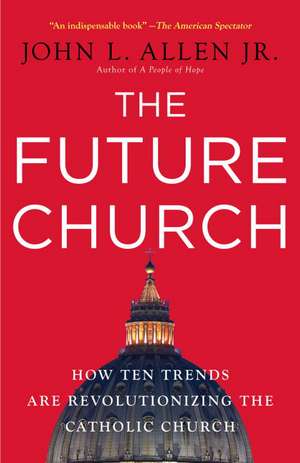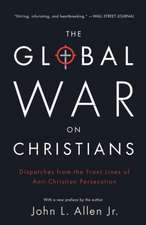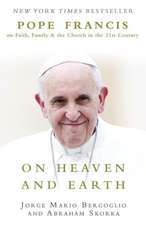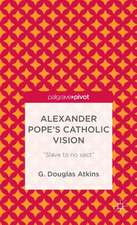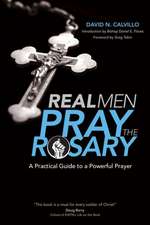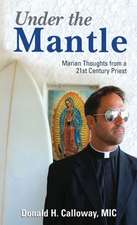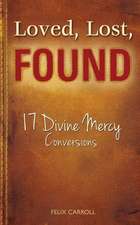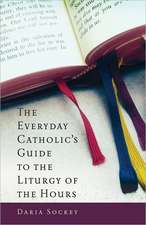The Future Church: How Ten Trends Are Revolutionizing the Catholic Church
Autor John L. jr. Allenen Limba Engleză Paperback – 31 dec 2011
Vezi toate premiile Carte premiată
Christian Retailing's Best (2010)
What will the Catholic Church be like in 100 years? Will there be a woman pope? Will dioceses throughout the United States and the rest of the world go bankrupt from years of scandal? In THE FUTURE CHURCH, John L. Allen puts forth the ten trends he believes will transform the Church into the twenty-second century. From the influence of Catholics in Africa, Asia, and Latin America on doctrine and practices to the impact of multinational organizations on local and ethical standards, Allen delves into the impact of globalization on the Roman Catholic Church and argues that it must rethink fundamental issues, policies, and ways of doing business. Allen shows that over the next century, the Church will have to respond to changes within the institution itself and in the world as a whole whether it is contending with biotechnical advances—including cloning and genetic enhancement—the aging Catholic population, or expanding the roles of the laity.
Like Thomas Friedman’s The World Is Flat, THE FUTURE CHURCH establishes a new framework for meeting the challenges of a changing world.
From the Hardcover edition.
Preț: 116.64 lei
Nou
Puncte Express: 175
Preț estimativ în valută:
22.32€ • 23.22$ • 18.43£
22.32€ • 23.22$ • 18.43£
Carte disponibilă
Livrare economică 24 martie-07 aprilie
Preluare comenzi: 021 569.72.76
Specificații
ISBN-13: 9780385520393
ISBN-10: 0385520395
Pagini: 469
Dimensiuni: 132 x 203 x 33 mm
Greutate: 0.34 kg
Editura: IMAGE
ISBN-10: 0385520395
Pagini: 469
Dimensiuni: 132 x 203 x 33 mm
Greutate: 0.34 kg
Editura: IMAGE
Notă biografică
JOHN L. ALLEN, Jr., is the Vatican correspondent for the National Catholic Reporter and a Vatican analyst for CNBN and National Public Radio. He is the author of Conclave, All the Pope’s Men, and Opus Dei, and writes the weekly Internet column, “The Word from Rome.” He lives in New York City and Rome.
From the Hardcover edition.
From the Hardcover edition.
Extras
In Thomas Friedman’s enormously popular book about globalization, he summarized the essential message in four words: the world is flat. Globalization is knocking down one barrier to opportunity after another, creating a world in which smart, hungry go- getters in India, China, or Brazil can compete not just for the low- wage jobs Americans don’t want, but for the hightech, high- pay jobs they definitely do want. For that reason, Friedman’s book came with a warning: Americans need to hustle in this century or they’ll find themselves run over by this phenomenon.
This too is a book about globalization. Its subject is the oldest globalized institution on earth, the Roman Catholic Church. Its bottom line can also be expressed in a few words: the church is upside down. By that, I don’t mean that the Church is topsy- turvy or out of whack. I mean that the issues, party lines, and ways of doing business that have dominated Catholicism in the forty- plus years since the close of the Second Vatican Council in 1965, that watershed moment in modern Catholic life, are being turned on their head by a series of new forces reshaping the global Church. This book comes with a warning too: Catholics in the twenty- first century won’t just need hustle (though they certainly will need that), but above all they’ll need imagination. They’ll need the capacity to reconsider how they think about the Church, and what they do with their faith, because otherwise Catholicism won’t rise to the occasion of these new challenges— it’ll be steamrolled by them.
Consider the following ways in which the Catholic Church is upside down in the twenty- first century:
• A Church dominated in the twentieth century by the global North, meaning Europe and North America, today finds two thirds of its members living in Africa, Asia, and Latin America. Catholic leadership will come from all over the world in this century to a degree never before experienced.
• A Church whose watchword after the Second Vatican Council (1962– 65) was aggiornamento, meaning “opening up to the modern world,” is today officially cutting in the opposite direction, reaffirming everything that makes Catholicism different from modernity. This politics of identity is in part a reaction against runaway secularization.
• A Church whose primary interreligious relationship for the last forty years has been with Judaism now finds itself struggling to come to terms with a newly assertive Islam, not just in the Middle East, Africa, and Asia, but in its own European backyard.
• A Church that has historically invested a large share of its pastoral energy in the young now has to cope, beginning in the North, with the most rapidly aging population in human history.
• A Church that has long relied on its clergy to deliver pastoral care and to provide leadership now has lay people doing both in record numbers and in a staggering variety of ways.
• A Church used to debating bioethical issues that have been around for millennia— abortion, birth control, and homosexuality— finds itself in a brave new world of cloning, ge ne tic enhancements, and trans- species chimeras. Its moral teaching is struggling desperately to keep pace with scientific advances.
• A Church whose social teaching took shape in the early stages of the Industrial Revolution now faces a twenty- first- century globalized world, populated by strange entities such as multinational corporations
(MNCs) and intergovernmental organizations (IGOs) that didn’t exist when it crafted its vision of the just society.
• A Church whose social concern focuses almost exclusively on human beings finds itself in a world in which the welfare of the cosmos itself requires new theological and moral reflection.
• A Church whose diplomacy has always relied on the Great Catholic Power of the day is now moving in a multipolar world, in which most of the poles that matter aren’t Catholic, and some aren’t even Christian.
• A Church accustomed to thinking of the Christian “other” as the Orthodox, Anglicans, and Protestants today is watching Pentecostals march across the planet, shooting up from 5 to 20 percent of global Christianity in barely a quarter century— in part by siphoning off significant numbers of Catholics. The Catholic Church is itself being “Pentecostalized” through the Charismatic movement.
An old car commercial carried the tagline, “This isn’t your grandfather’s Buick.” I would submit that what we’re looking at today isn’t your mom and dad’s Catholic Church— and it may not even be your older sister’s. The aim of this book is to survey the most important currents shaping the Catholic Church today, and to look down the line at how they might play out during the rest of the twenty- first century. The word I’m using to describe these currents is “trend.” To explain what I have in mind, let me quote the historian Arnold J. Toynbee from his book Civilization on Trial:
The things that make good headlines are on the surface of the stream of life, and they distract us from the slower, impalpable, imponderable movements that work below the surface and penetrate to the depths. But it is really these deeper, slower movements that make history, and it is they that stand out huge in retrospect, when the sensational passing events have dwindled, in perspective, to their true proportions.
Those “slower, impalpable movements” are what I mean by “trends.” (I lay out the six criteria I employed for what counts as a trend in the chapter on “Trends that Aren’t.”) In several cases, there are plenty of headlines associated with one or another aspect of the trends, but usually they’re treated in isolation, as random events, rather than being seen as part of deeper historical patterns. I hope to put the pieces of the contemporary Catholic puzzle together, so we can see what the picture looks like.
Each of the examples of an upside- down Church given above corresponds to one of the ten trends surveyed in this book:
1. A World Church
2. Evangelical Catholicism
3. Islam
4. The New Demography
5. Expanding Lay Roles
6. The Biotech Revolution
7. Globalization
8. Ecology
9. Multipolarism
10. Pentecostalism
The ten chapters of the book correspond to the ten trends listed above. They are not listed in order of rank or priority, as if number one were more important than number ten. To be completely honest, the sequence simply reflects the order in which I wrote the chapters. No additional significance should be attached to why one trend is number two, for example, and another number eight. The format in each chapter is to give the lay of the land first, examining what’s driving the trend and what impact it’s having on the Catholic Church, in a section called “What’s Happening.” I then move into more speculative territory, trying to anticipate what the trend could mean for the Church as the century unfolds. That part is called “What It Means.” These are not really predictions, but possible lines of development that could still be redirected, blocked, or turned in the opposite direction by forces not yet on the radar screen. In each chapter, I offer four categories of outcomes: near- certain, probable, possible, and long shots. Not only does the degree of probability go down with each category, but the projections venture farther out in time. Near- certain consequences are usually short- term extensions of developments that we can already see happening. Long shots, if they happen at all, are usually far on the horizon. The arc of time under consideration here is the rest of the century, meaning roughly ninety years. Farther out than that, all bets are off.
The book’s conclusion is intended as a stand- alone summary of what impact the trends will have in the century to come. I condense the likely profile of upside- down Catholicism into four points. They’re styled as sociological notes of the Church in the twenty- first century, inspired by the theological notes in the Nicene Creed: “One, Holy, Catholic, and Apostolic.” My notes are intended not as theological claims about the Church’s inner essence, but rather as descriptive terms for what Catholicism will actually look and feel like in this century. The four notes are: “Global, Uncompromising, Pentecostal, and Extroverted.” Readers who just can’t wait to arrive at the bottom line may want to read the conclusion first, then work backward.
Descriptive, not Prescriptive
It’s important to be clear at the outset about what this book is and what it’s not. I’m a journalist, not a priest, theologian, or academic. My role is to document what’s happening in Catholicism and to provide context for it, not tell readers what to think. This book is therefore an exercise in description, not prescription. I’m not trying to argue that these trends are the way Catholicism ought to go, or the issues it ought to face. I’m saying instead that they accurately express the way Catholicism really is going, and the issues it really is facing. I invite readers to bracket off the immediate instinct to debate whether any given trend is positive or negative, and to try to understand it first on its own terms. After that, I entrust the prescriptive debate to better minds than my own. I stress this point because in writing about these trends, I find that many Catholics immediately want to challenge one or another of them on prescriptive grounds: “I don’t think evangelical Catholicism is what Vatican Two had in mind,” or “Ecology is just another word for pagan pantheism.” I understand those reactions. Religion is about someone’s ultimate concern, their deepest passion, and naturally Catholic blood boils when someone says the Church is moving in direction “x,” if a given Catholic happens to regard “x” as obtuse, or heretical, or reactionary. In principle, that kind of argument is terrific. Part of the dynamism of Catholicism is that so many people help keep the Church alive by being passionate enough to push the Church to realize the best version of itself. To move immediately to forming opinions, however, is to miss the point of what I’m trying to do here. There will be time later to argue whether a given trend is a good idea or a bad one. For that sort of prescriptive debate to be useful, it first has to be based on solid analysis, and that’s the work of this book.
In a similar vein, because this book is a work of journalism, it is not a statement of faith. I’m trying to describe the Church the way a sociologist might. I fully recognize that from a supernatural point of view, the lone trend that matters in Catholic life is God’s will for the Church, which can always erupt in unpredictable ways. On this level, decisions about the Catholic future are forged not in dispassionate so cio log i cal analysis, but out of deep prayer and the spiritual effort to discern where the Holy Spirit is moving. Yet the Catholic understanding, put in its classic form in the thirteenth century by Saint Thomas Aquinas, is that grace builds on nature, it doesn’t replace it. In other words, the descriptive observations about human realities in the Church offered here may not be the whole story, but they are nonetheless important preliminaries for spiritual reflection. They offer fruit for Catholic prayer, without any pretense of rendering it unnecessary. In the interest of full disclosure, I should confess that I veer into prescriptive territory in the book’s conclusion— not in terms of whether these trends are good or bad, but rather in urging Catholics to think and act in new ways in order to adapt successfully to this “upside- down” situation. This is one final point of resemblance between my book and Friedman’s The World is Flat. Friedman’s list of drivers shaping a flat world is basically descriptive, but he’s unabashedly enthusiastic about globalization. Similarly, I make no bones about my sympathy for Catholicism. I want to see the Church harness its resources to respond to the perils and promise of the twenty- first century, because I believe Catholicism has a potentially transformative contribution to offer that no other global actor can replicate. I don’t pretend to know how to accomplish this, but I think I know how not to do it, which is to allow the Church’s resources and energy to be consumed in stale internal debates. Tribalism will not be an adaptive behavior in the twenty- first- century Church.
I suppose I’m trying to strike a balance between leaving readers free to decide what to think, but at the same time encouraging them to think big. Maybe a quick story will help explain the difference. Some time ago, I spent an afternoon discussing these trends with a couple hundred priests and pastoral workers in the Archdiocese of Seattle, at the invitation of Archbishop Alex Brunett. After I had finished, Brunett got up and told the crowd that in his opinion, an outlook he called “Trends Catholicism” offers a “hopeful vision for the future of the Church.” I was a bit taken aback, since my intent was to describe trends, not to create one of my own. I wondered if I had gone off track someplace, and was now coming off as a prophet or reformer rather than a journalist. Upon reflection, however, I think I know what Archbishop Brunett meant. Reading about these trends won’t tell you who’s right or wrong in Church debates, but it does point to a broader horizon than the narrow set that is often seen as “issues in the Church.” This book may not be prescriptive, but it is an invitation to perspective.
How Do I Know?
The ten trends described in this book are not like the Ten Commandments; they weren’t revealed by God, and I didn’t bring them down from a mountain carved on stone tablets. The Vatican does not issue an official set of Catholic Trends, and there’s no international Catholic research agency that has established such a list. No international Catholic publication that I’m aware of puts out such a list either. So, it’s a perfectly fair reaction to look at the list I provided above and ask: “How do you know?”
The truth is that compiling a list of trends in Catholicism is a subjective enterprise. My guess is that out of any ten Catholics you might pick at random and ask to name the most important forces shaping the future of the Church, not one of them would come up with exactly the same list presented here. That’s part of the fun, since anyone is free to argue that some items on the list shouldn’t be there, and that other things should be included that aren’t. Yet I didn’t just throw darts at a dart board, picking these ten forces at random. They’re based on more than a de cade of day- in, day- out analysis of the global Church. Let me briefly describe the three sources that have most influenced my decisions.
First is my experience of covering the Vatican and the global Church. Over the last decade, I’ve made reporting trips to forty countries on every continent, sometimes following the pope and sometimes on my own. I’ve had the opportunity to observe the Church in a variety of cultural, ethnic, socioeconomic, and po liti cal circumstances. Over time, that experience has given me a feel for what’s circulating in the global Catholic bloodstream, as opposed to something likely to be a transitory and local affair. I certainly don’t claim infallibility, but I’ve been lucky to be able to move around the Catholic world and to occupy a front- row seat for many of its recent dramas in a way that few other people have had the opportunity to do.
Second, I’m relying on thousands of hours of interviews with cardinals, bishops and priests, and even popes, as well as theologians, politi cal activists, social workers, liturgical experts, leaders in ecumenical dialogue, and virtually every other species of life in the Catholic biosphere. Much of this conversation has come in and around the Vatican. Saint Peter’s Square is to the Church what Times Square is to the world: stand there long enough, and you’ll see virtually every Catholic alive. It’s the crossroads of the globalChurch, and that has given me a unique opportunity to take the temperature of the Catholic Church in various parts of the world.
Third, I’ve drawn upon reactions from thousands of readers of my online Internet column, once called “The Word from Rome” and now rechristened as “All Things Catholic.” I’ve developed this book a bit like open- source software, in that I’ve periodically put out bits and pieces of it and invited feedback. Though for the most part I never had the time to answer all those readers individually, they’ll find traces of their contributions here and there. My column has a readership that reflects a wide cross- section of Catholic instincts and experiences, and this input was enormously helpful in pointing out gaps in my logic, lifting up things I’d never considered, and generally making this a much more thoughtful book.
None of this adds up to scientific certainty, but if I had to bet on ten issues that will be important for Catholicism in 2075, I’d feel pretty good about these selections.
Not the Usual Suspects
Some readers might want to take that bet, if for no other reason than because the items on the list are certainly not the subjects that usually come up in pop u lar discussions of the Catholic Church. There’s no trend concerning birth control, homosexuality, or abortion; nothing about women priests or the power of the pope; nothing about sex abuse by priests, clerical celibacy, democracy in the Church, or clefts between bishops and laity. (All these subjects are addressed throughout the book, but as pieces of a bigger picture.)
In short, there’s an obvious gap between the ten trends listed above and the topics generally touted in newspaper headlines and TV talk shows. That discrepancy is discussed at greater length in the chapter on “Trends That Aren’t,” but suffice it to say here that the decision not to round up the usual Catholic suspects isn’t an attempt to whitewash very real problems in the Church, nor is it based merely on the fact that some of these preoccupations in Eu rope and the United States are not live concerns for Africa, Latin America, and Asia, though that’s certainly the case.
Instead, the decision not to style these topics as trends is shaped by two descriptive observations. First, whate ver opinion one might hold on the merits of existing power structures in Catholicism or its teaching on sexual morality, there’s little realistic basis to believe the official structures or doctrines of the Church will change significantly on these fronts in the period under consideration in this book, meaning the rest of the twenty- first century. For that reason, these are not forces likely to produce top- to- bottomtransformation in the near future. Second, without denying the importance of these hot- button issues, their centrality in day- to- day Catholic life is often exaggerated. In truth, a good deal of the most creative energy in the Church comes from individuals and groups least invested in internal debates, whether one would conventionally describe these circles as liberal, conservative, or somewhere in between. To take just one example, the Community of Sant’Egidio has to rank among today’s most effective actors on the Catholic stage through its promotion of ecumenical and interreligious dialogue, conflict resolution, poverty relief, and opposition to the death penalty. The community takes no position, however, on matters such as gay marriage or clerical celibacy.
The HIV/AIDS epidemic offers another case in point. Most everyone knows that the Catholic Church is officially opposed to condoms as a solution to the crisis, but what people often fail to appreciate is that this position is more or less a footnote to the bigger story of Catholic mobilization. Today, the Vatican estimates that 27 percent of all AIDS patients worldwide are cared for by Catholic hospitals, hospices, and palliative care centers, representing by far the largest humanitarian response to the AIDS pandemic on earth. Discussion about whether the Catholic position on condoms ought to be revisited in light of AIDS is legitimate, and it goes on even at senior levels of the Church itself. Creating the impression that saying “no” to condoms is the dominant Catholic response to the crisis, however, falsifies reality.
In fact, those Catholics most deeply involved with the AIDS issue probably spend the least time thinking about condoms— except, of course, when reporters and activists cajole them into doing so.
Such examples illustrate that trying to understand Catholicism primarily through the lens of the issues that make headlines results in only bits and pieces of the full picture coming into focus. No account of contemporary Catholicism can ignore its deep fissures surrounding such matters and
they will repeatedly surface in this book. Nonetheless, we have to dig deeper to spot where things are truly heading.
Three Other Preliminaries
1. CONFLICTING IMPULSES
Even more than “How do you know?,” far and away the most pop u lar question I get when I talk about these trends is, “What does it mean?” People want to know whether the Church will become more conservative, or more liberal; more clerical, or more lay- led; more traditional or more avant- garde; more centralized or more diverse; and a whole series of other binary oppositions that interest one faction or another. Unfortunately, the right answer to almost all of those questions is “both,” depending upon how you define the terms and which trend you’re talking about. Not all of these trends cut in the same direction, and in some ways they quite obviously work at cross- purposes. The rise of Southern Catholicism, the emergence of multipolarism, and the spread of Pentecostalism will all push Catholicism to provide greater scope for “inculturation,” meaning allowing the faith to be shaped by the local culture in which it’s expressed.
Evangelical Catholicism, on the other hand, emphasizes traditional modes of language, dress, and behavior that by and large took shape in the West. To take another looming contradiction, evangelical Catholicism is driving the Church into what are perceived in the West as steadily more conservative positions on issues such as homosexuality and end- of- life care, yet new biotechnology debates over ge ne tic engineering and GMOs (genetically modified organism) will likely see Catholicism aligned as much with the secular left as with the right. In other words, the impulses unleashed by the trends are going to butt heads in a variety of fields, and it’s hard to know right now exactly how things will shake out.
Anybody hoping for a straight, one- way line of development in the upside- down Church will be disappointed. Catholicism is too big and too complex not to contain conflicting tendencies. It’s not really a question of which way the Church will go, but which ways— and sometimes that movement will be pulling in opposite directions. The boundaries between one trend and the next are fluid, and they interact with one another across the board. In a sense, there’s really only one trend here, globalization, which is producing reactions inside the Catholic Church as well as creating a whole new series of challenges outside. Yet each of these trends also has its own contours and its own inner logic. It makes more sense to treat them separately, noting along the way the places where the lines cross.
2. A QUESTION OF LANGUAGE
Academics are notorious for debating the fine points of language, and theologians are no exception. Today, some Catholic writers draw a distinction between “global Catholicism” and “world Catholicism.” For those attached to this bit of nuance, the former is basically bad and the latter good. “Global Catholicism” is understood to be the Catholic equivalent of cultural globalization, meaning the eradication of local cultures and the imposition of a homogenized global system. “World Catholicism,” on the other hand, refers to the planetary diversity of various languages, ethnicities, and traditions brought together under the Catholic umbrella, without eviscerating what makes them unique. I understand the distinction, but I’m not convinced that the words in themselves carry the meaning that these theologians suggest. In this book, I use “global Catholicism” and “world Catholicism” interchangeably. What I mean by both terms is the universal, planetary dimension of Catholicism, without intending to take any position about the proper balance between unity and diversity.
3. AMERICAN EYES
This is a book about world Catholicism, and Catholics from every corner of the globe tell their stories in these pages. Yet there’s a sense in which this is world Catholicism as seen through American eyes. By that, I don’t mean that the facts and figures have been skewed to serve American interests, nor that the selection of trends has been driven exclusively by an American sense of priorities. Were that the case, for example, the sexual abuse crisis would certainly be on the list. (I explain in the chapter “Trends That
Aren’t” why the crisis didn’t make the cut.) But along the way, I pay special attention to what the mega- trends I’m describing will mean for the Catholic Church in the United States, both as a whole and for the various subgroups within it, as well as their implications for the American government and broader American culture. This is not intended to suggest that every trajectory in the life of the Catholic Church ought to be mea sured by its potential impact on the United States. I like to remind American Catholics that we constitute 6 percent of the global Catholic population, which means that 94 percent of the Catholics in the world are not necessarily like us. If anything, the United States probably looms too large already on the global Catholic scene. Americans had eleven cardinals in the conclave that elected Pope Benedict XVI, for example, the same number as all of Africa, even though Africa has twice the Catholic population. Brazil, the largest Catholic country on earth, only had three votes, which works out to one cardinal- elector for every 6 million American Catholics and for every 43 million Catholics in Brazil. Though Catholicism is not a democracy, that sort of discrepancy understandably strikes many Catholics around the world as unfair. I look at the trends through American eyes firstly because that’s likely to be the primary readership of the book, and I want American readers to be able to connect the dots between these broad forces and their own lives. Secondly, my experience living abroad suggests that sometimes Americans need help thinking in these terms. It sometimes comes more naturally for Catholics elsewhere to connect what’s happening in Congo, or Colombia, or Cambodia to their own fate. A largely benign form of national parochialism is in some ways the original sin of much Catholic conversation in the United States. Pick up any random sample of recent titles on Catholicism in America, no matter what the po liti cal or theological stance, and in most cases the author’s imagination seems to stop at the water’s edge. The impression is that the future of American Catholicism is largely a domestic enterprise, with at most a fleeting connection with the rest of the Church.
I hope the American lens in this book will help Catholics in the United States to think in a more global key. As a matter of faith, doing so is implied in calling the Church “catholic”; as matter of descriptive fact, it will be ever more difficult in the twenty- first century to consider issues in American Catholicism in isolation from the rest of the Church. In that sense, the choice to see through American eyes is a way of preparing readers for what’s coming.
This too is a book about globalization. Its subject is the oldest globalized institution on earth, the Roman Catholic Church. Its bottom line can also be expressed in a few words: the church is upside down. By that, I don’t mean that the Church is topsy- turvy or out of whack. I mean that the issues, party lines, and ways of doing business that have dominated Catholicism in the forty- plus years since the close of the Second Vatican Council in 1965, that watershed moment in modern Catholic life, are being turned on their head by a series of new forces reshaping the global Church. This book comes with a warning too: Catholics in the twenty- first century won’t just need hustle (though they certainly will need that), but above all they’ll need imagination. They’ll need the capacity to reconsider how they think about the Church, and what they do with their faith, because otherwise Catholicism won’t rise to the occasion of these new challenges— it’ll be steamrolled by them.
Consider the following ways in which the Catholic Church is upside down in the twenty- first century:
• A Church dominated in the twentieth century by the global North, meaning Europe and North America, today finds two thirds of its members living in Africa, Asia, and Latin America. Catholic leadership will come from all over the world in this century to a degree never before experienced.
• A Church whose watchword after the Second Vatican Council (1962– 65) was aggiornamento, meaning “opening up to the modern world,” is today officially cutting in the opposite direction, reaffirming everything that makes Catholicism different from modernity. This politics of identity is in part a reaction against runaway secularization.
• A Church whose primary interreligious relationship for the last forty years has been with Judaism now finds itself struggling to come to terms with a newly assertive Islam, not just in the Middle East, Africa, and Asia, but in its own European backyard.
• A Church that has historically invested a large share of its pastoral energy in the young now has to cope, beginning in the North, with the most rapidly aging population in human history.
• A Church that has long relied on its clergy to deliver pastoral care and to provide leadership now has lay people doing both in record numbers and in a staggering variety of ways.
• A Church used to debating bioethical issues that have been around for millennia— abortion, birth control, and homosexuality— finds itself in a brave new world of cloning, ge ne tic enhancements, and trans- species chimeras. Its moral teaching is struggling desperately to keep pace with scientific advances.
• A Church whose social teaching took shape in the early stages of the Industrial Revolution now faces a twenty- first- century globalized world, populated by strange entities such as multinational corporations
(MNCs) and intergovernmental organizations (IGOs) that didn’t exist when it crafted its vision of the just society.
• A Church whose social concern focuses almost exclusively on human beings finds itself in a world in which the welfare of the cosmos itself requires new theological and moral reflection.
• A Church whose diplomacy has always relied on the Great Catholic Power of the day is now moving in a multipolar world, in which most of the poles that matter aren’t Catholic, and some aren’t even Christian.
• A Church accustomed to thinking of the Christian “other” as the Orthodox, Anglicans, and Protestants today is watching Pentecostals march across the planet, shooting up from 5 to 20 percent of global Christianity in barely a quarter century— in part by siphoning off significant numbers of Catholics. The Catholic Church is itself being “Pentecostalized” through the Charismatic movement.
An old car commercial carried the tagline, “This isn’t your grandfather’s Buick.” I would submit that what we’re looking at today isn’t your mom and dad’s Catholic Church— and it may not even be your older sister’s. The aim of this book is to survey the most important currents shaping the Catholic Church today, and to look down the line at how they might play out during the rest of the twenty- first century. The word I’m using to describe these currents is “trend.” To explain what I have in mind, let me quote the historian Arnold J. Toynbee from his book Civilization on Trial:
The things that make good headlines are on the surface of the stream of life, and they distract us from the slower, impalpable, imponderable movements that work below the surface and penetrate to the depths. But it is really these deeper, slower movements that make history, and it is they that stand out huge in retrospect, when the sensational passing events have dwindled, in perspective, to their true proportions.
Those “slower, impalpable movements” are what I mean by “trends.” (I lay out the six criteria I employed for what counts as a trend in the chapter on “Trends that Aren’t.”) In several cases, there are plenty of headlines associated with one or another aspect of the trends, but usually they’re treated in isolation, as random events, rather than being seen as part of deeper historical patterns. I hope to put the pieces of the contemporary Catholic puzzle together, so we can see what the picture looks like.
Each of the examples of an upside- down Church given above corresponds to one of the ten trends surveyed in this book:
1. A World Church
2. Evangelical Catholicism
3. Islam
4. The New Demography
5. Expanding Lay Roles
6. The Biotech Revolution
7. Globalization
8. Ecology
9. Multipolarism
10. Pentecostalism
The ten chapters of the book correspond to the ten trends listed above. They are not listed in order of rank or priority, as if number one were more important than number ten. To be completely honest, the sequence simply reflects the order in which I wrote the chapters. No additional significance should be attached to why one trend is number two, for example, and another number eight. The format in each chapter is to give the lay of the land first, examining what’s driving the trend and what impact it’s having on the Catholic Church, in a section called “What’s Happening.” I then move into more speculative territory, trying to anticipate what the trend could mean for the Church as the century unfolds. That part is called “What It Means.” These are not really predictions, but possible lines of development that could still be redirected, blocked, or turned in the opposite direction by forces not yet on the radar screen. In each chapter, I offer four categories of outcomes: near- certain, probable, possible, and long shots. Not only does the degree of probability go down with each category, but the projections venture farther out in time. Near- certain consequences are usually short- term extensions of developments that we can already see happening. Long shots, if they happen at all, are usually far on the horizon. The arc of time under consideration here is the rest of the century, meaning roughly ninety years. Farther out than that, all bets are off.
The book’s conclusion is intended as a stand- alone summary of what impact the trends will have in the century to come. I condense the likely profile of upside- down Catholicism into four points. They’re styled as sociological notes of the Church in the twenty- first century, inspired by the theological notes in the Nicene Creed: “One, Holy, Catholic, and Apostolic.” My notes are intended not as theological claims about the Church’s inner essence, but rather as descriptive terms for what Catholicism will actually look and feel like in this century. The four notes are: “Global, Uncompromising, Pentecostal, and Extroverted.” Readers who just can’t wait to arrive at the bottom line may want to read the conclusion first, then work backward.
Descriptive, not Prescriptive
It’s important to be clear at the outset about what this book is and what it’s not. I’m a journalist, not a priest, theologian, or academic. My role is to document what’s happening in Catholicism and to provide context for it, not tell readers what to think. This book is therefore an exercise in description, not prescription. I’m not trying to argue that these trends are the way Catholicism ought to go, or the issues it ought to face. I’m saying instead that they accurately express the way Catholicism really is going, and the issues it really is facing. I invite readers to bracket off the immediate instinct to debate whether any given trend is positive or negative, and to try to understand it first on its own terms. After that, I entrust the prescriptive debate to better minds than my own. I stress this point because in writing about these trends, I find that many Catholics immediately want to challenge one or another of them on prescriptive grounds: “I don’t think evangelical Catholicism is what Vatican Two had in mind,” or “Ecology is just another word for pagan pantheism.” I understand those reactions. Religion is about someone’s ultimate concern, their deepest passion, and naturally Catholic blood boils when someone says the Church is moving in direction “x,” if a given Catholic happens to regard “x” as obtuse, or heretical, or reactionary. In principle, that kind of argument is terrific. Part of the dynamism of Catholicism is that so many people help keep the Church alive by being passionate enough to push the Church to realize the best version of itself. To move immediately to forming opinions, however, is to miss the point of what I’m trying to do here. There will be time later to argue whether a given trend is a good idea or a bad one. For that sort of prescriptive debate to be useful, it first has to be based on solid analysis, and that’s the work of this book.
In a similar vein, because this book is a work of journalism, it is not a statement of faith. I’m trying to describe the Church the way a sociologist might. I fully recognize that from a supernatural point of view, the lone trend that matters in Catholic life is God’s will for the Church, which can always erupt in unpredictable ways. On this level, decisions about the Catholic future are forged not in dispassionate so cio log i cal analysis, but out of deep prayer and the spiritual effort to discern where the Holy Spirit is moving. Yet the Catholic understanding, put in its classic form in the thirteenth century by Saint Thomas Aquinas, is that grace builds on nature, it doesn’t replace it. In other words, the descriptive observations about human realities in the Church offered here may not be the whole story, but they are nonetheless important preliminaries for spiritual reflection. They offer fruit for Catholic prayer, without any pretense of rendering it unnecessary. In the interest of full disclosure, I should confess that I veer into prescriptive territory in the book’s conclusion— not in terms of whether these trends are good or bad, but rather in urging Catholics to think and act in new ways in order to adapt successfully to this “upside- down” situation. This is one final point of resemblance between my book and Friedman’s The World is Flat. Friedman’s list of drivers shaping a flat world is basically descriptive, but he’s unabashedly enthusiastic about globalization. Similarly, I make no bones about my sympathy for Catholicism. I want to see the Church harness its resources to respond to the perils and promise of the twenty- first century, because I believe Catholicism has a potentially transformative contribution to offer that no other global actor can replicate. I don’t pretend to know how to accomplish this, but I think I know how not to do it, which is to allow the Church’s resources and energy to be consumed in stale internal debates. Tribalism will not be an adaptive behavior in the twenty- first- century Church.
I suppose I’m trying to strike a balance between leaving readers free to decide what to think, but at the same time encouraging them to think big. Maybe a quick story will help explain the difference. Some time ago, I spent an afternoon discussing these trends with a couple hundred priests and pastoral workers in the Archdiocese of Seattle, at the invitation of Archbishop Alex Brunett. After I had finished, Brunett got up and told the crowd that in his opinion, an outlook he called “Trends Catholicism” offers a “hopeful vision for the future of the Church.” I was a bit taken aback, since my intent was to describe trends, not to create one of my own. I wondered if I had gone off track someplace, and was now coming off as a prophet or reformer rather than a journalist. Upon reflection, however, I think I know what Archbishop Brunett meant. Reading about these trends won’t tell you who’s right or wrong in Church debates, but it does point to a broader horizon than the narrow set that is often seen as “issues in the Church.” This book may not be prescriptive, but it is an invitation to perspective.
How Do I Know?
The ten trends described in this book are not like the Ten Commandments; they weren’t revealed by God, and I didn’t bring them down from a mountain carved on stone tablets. The Vatican does not issue an official set of Catholic Trends, and there’s no international Catholic research agency that has established such a list. No international Catholic publication that I’m aware of puts out such a list either. So, it’s a perfectly fair reaction to look at the list I provided above and ask: “How do you know?”
The truth is that compiling a list of trends in Catholicism is a subjective enterprise. My guess is that out of any ten Catholics you might pick at random and ask to name the most important forces shaping the future of the Church, not one of them would come up with exactly the same list presented here. That’s part of the fun, since anyone is free to argue that some items on the list shouldn’t be there, and that other things should be included that aren’t. Yet I didn’t just throw darts at a dart board, picking these ten forces at random. They’re based on more than a de cade of day- in, day- out analysis of the global Church. Let me briefly describe the three sources that have most influenced my decisions.
First is my experience of covering the Vatican and the global Church. Over the last decade, I’ve made reporting trips to forty countries on every continent, sometimes following the pope and sometimes on my own. I’ve had the opportunity to observe the Church in a variety of cultural, ethnic, socioeconomic, and po liti cal circumstances. Over time, that experience has given me a feel for what’s circulating in the global Catholic bloodstream, as opposed to something likely to be a transitory and local affair. I certainly don’t claim infallibility, but I’ve been lucky to be able to move around the Catholic world and to occupy a front- row seat for many of its recent dramas in a way that few other people have had the opportunity to do.
Second, I’m relying on thousands of hours of interviews with cardinals, bishops and priests, and even popes, as well as theologians, politi cal activists, social workers, liturgical experts, leaders in ecumenical dialogue, and virtually every other species of life in the Catholic biosphere. Much of this conversation has come in and around the Vatican. Saint Peter’s Square is to the Church what Times Square is to the world: stand there long enough, and you’ll see virtually every Catholic alive. It’s the crossroads of the globalChurch, and that has given me a unique opportunity to take the temperature of the Catholic Church in various parts of the world.
Third, I’ve drawn upon reactions from thousands of readers of my online Internet column, once called “The Word from Rome” and now rechristened as “All Things Catholic.” I’ve developed this book a bit like open- source software, in that I’ve periodically put out bits and pieces of it and invited feedback. Though for the most part I never had the time to answer all those readers individually, they’ll find traces of their contributions here and there. My column has a readership that reflects a wide cross- section of Catholic instincts and experiences, and this input was enormously helpful in pointing out gaps in my logic, lifting up things I’d never considered, and generally making this a much more thoughtful book.
None of this adds up to scientific certainty, but if I had to bet on ten issues that will be important for Catholicism in 2075, I’d feel pretty good about these selections.
Not the Usual Suspects
Some readers might want to take that bet, if for no other reason than because the items on the list are certainly not the subjects that usually come up in pop u lar discussions of the Catholic Church. There’s no trend concerning birth control, homosexuality, or abortion; nothing about women priests or the power of the pope; nothing about sex abuse by priests, clerical celibacy, democracy in the Church, or clefts between bishops and laity. (All these subjects are addressed throughout the book, but as pieces of a bigger picture.)
In short, there’s an obvious gap between the ten trends listed above and the topics generally touted in newspaper headlines and TV talk shows. That discrepancy is discussed at greater length in the chapter on “Trends That Aren’t,” but suffice it to say here that the decision not to round up the usual Catholic suspects isn’t an attempt to whitewash very real problems in the Church, nor is it based merely on the fact that some of these preoccupations in Eu rope and the United States are not live concerns for Africa, Latin America, and Asia, though that’s certainly the case.
Instead, the decision not to style these topics as trends is shaped by two descriptive observations. First, whate ver opinion one might hold on the merits of existing power structures in Catholicism or its teaching on sexual morality, there’s little realistic basis to believe the official structures or doctrines of the Church will change significantly on these fronts in the period under consideration in this book, meaning the rest of the twenty- first century. For that reason, these are not forces likely to produce top- to- bottomtransformation in the near future. Second, without denying the importance of these hot- button issues, their centrality in day- to- day Catholic life is often exaggerated. In truth, a good deal of the most creative energy in the Church comes from individuals and groups least invested in internal debates, whether one would conventionally describe these circles as liberal, conservative, or somewhere in between. To take just one example, the Community of Sant’Egidio has to rank among today’s most effective actors on the Catholic stage through its promotion of ecumenical and interreligious dialogue, conflict resolution, poverty relief, and opposition to the death penalty. The community takes no position, however, on matters such as gay marriage or clerical celibacy.
The HIV/AIDS epidemic offers another case in point. Most everyone knows that the Catholic Church is officially opposed to condoms as a solution to the crisis, but what people often fail to appreciate is that this position is more or less a footnote to the bigger story of Catholic mobilization. Today, the Vatican estimates that 27 percent of all AIDS patients worldwide are cared for by Catholic hospitals, hospices, and palliative care centers, representing by far the largest humanitarian response to the AIDS pandemic on earth. Discussion about whether the Catholic position on condoms ought to be revisited in light of AIDS is legitimate, and it goes on even at senior levels of the Church itself. Creating the impression that saying “no” to condoms is the dominant Catholic response to the crisis, however, falsifies reality.
In fact, those Catholics most deeply involved with the AIDS issue probably spend the least time thinking about condoms— except, of course, when reporters and activists cajole them into doing so.
Such examples illustrate that trying to understand Catholicism primarily through the lens of the issues that make headlines results in only bits and pieces of the full picture coming into focus. No account of contemporary Catholicism can ignore its deep fissures surrounding such matters and
they will repeatedly surface in this book. Nonetheless, we have to dig deeper to spot where things are truly heading.
Three Other Preliminaries
1. CONFLICTING IMPULSES
Even more than “How do you know?,” far and away the most pop u lar question I get when I talk about these trends is, “What does it mean?” People want to know whether the Church will become more conservative, or more liberal; more clerical, or more lay- led; more traditional or more avant- garde; more centralized or more diverse; and a whole series of other binary oppositions that interest one faction or another. Unfortunately, the right answer to almost all of those questions is “both,” depending upon how you define the terms and which trend you’re talking about. Not all of these trends cut in the same direction, and in some ways they quite obviously work at cross- purposes. The rise of Southern Catholicism, the emergence of multipolarism, and the spread of Pentecostalism will all push Catholicism to provide greater scope for “inculturation,” meaning allowing the faith to be shaped by the local culture in which it’s expressed.
Evangelical Catholicism, on the other hand, emphasizes traditional modes of language, dress, and behavior that by and large took shape in the West. To take another looming contradiction, evangelical Catholicism is driving the Church into what are perceived in the West as steadily more conservative positions on issues such as homosexuality and end- of- life care, yet new biotechnology debates over ge ne tic engineering and GMOs (genetically modified organism) will likely see Catholicism aligned as much with the secular left as with the right. In other words, the impulses unleashed by the trends are going to butt heads in a variety of fields, and it’s hard to know right now exactly how things will shake out.
Anybody hoping for a straight, one- way line of development in the upside- down Church will be disappointed. Catholicism is too big and too complex not to contain conflicting tendencies. It’s not really a question of which way the Church will go, but which ways— and sometimes that movement will be pulling in opposite directions. The boundaries between one trend and the next are fluid, and they interact with one another across the board. In a sense, there’s really only one trend here, globalization, which is producing reactions inside the Catholic Church as well as creating a whole new series of challenges outside. Yet each of these trends also has its own contours and its own inner logic. It makes more sense to treat them separately, noting along the way the places where the lines cross.
2. A QUESTION OF LANGUAGE
Academics are notorious for debating the fine points of language, and theologians are no exception. Today, some Catholic writers draw a distinction between “global Catholicism” and “world Catholicism.” For those attached to this bit of nuance, the former is basically bad and the latter good. “Global Catholicism” is understood to be the Catholic equivalent of cultural globalization, meaning the eradication of local cultures and the imposition of a homogenized global system. “World Catholicism,” on the other hand, refers to the planetary diversity of various languages, ethnicities, and traditions brought together under the Catholic umbrella, without eviscerating what makes them unique. I understand the distinction, but I’m not convinced that the words in themselves carry the meaning that these theologians suggest. In this book, I use “global Catholicism” and “world Catholicism” interchangeably. What I mean by both terms is the universal, planetary dimension of Catholicism, without intending to take any position about the proper balance between unity and diversity.
3. AMERICAN EYES
This is a book about world Catholicism, and Catholics from every corner of the globe tell their stories in these pages. Yet there’s a sense in which this is world Catholicism as seen through American eyes. By that, I don’t mean that the facts and figures have been skewed to serve American interests, nor that the selection of trends has been driven exclusively by an American sense of priorities. Were that the case, for example, the sexual abuse crisis would certainly be on the list. (I explain in the chapter “Trends That
Aren’t” why the crisis didn’t make the cut.) But along the way, I pay special attention to what the mega- trends I’m describing will mean for the Catholic Church in the United States, both as a whole and for the various subgroups within it, as well as their implications for the American government and broader American culture. This is not intended to suggest that every trajectory in the life of the Catholic Church ought to be mea sured by its potential impact on the United States. I like to remind American Catholics that we constitute 6 percent of the global Catholic population, which means that 94 percent of the Catholics in the world are not necessarily like us. If anything, the United States probably looms too large already on the global Catholic scene. Americans had eleven cardinals in the conclave that elected Pope Benedict XVI, for example, the same number as all of Africa, even though Africa has twice the Catholic population. Brazil, the largest Catholic country on earth, only had three votes, which works out to one cardinal- elector for every 6 million American Catholics and for every 43 million Catholics in Brazil. Though Catholicism is not a democracy, that sort of discrepancy understandably strikes many Catholics around the world as unfair. I look at the trends through American eyes firstly because that’s likely to be the primary readership of the book, and I want American readers to be able to connect the dots between these broad forces and their own lives. Secondly, my experience living abroad suggests that sometimes Americans need help thinking in these terms. It sometimes comes more naturally for Catholics elsewhere to connect what’s happening in Congo, or Colombia, or Cambodia to their own fate. A largely benign form of national parochialism is in some ways the original sin of much Catholic conversation in the United States. Pick up any random sample of recent titles on Catholicism in America, no matter what the po liti cal or theological stance, and in most cases the author’s imagination seems to stop at the water’s edge. The impression is that the future of American Catholicism is largely a domestic enterprise, with at most a fleeting connection with the rest of the Church.
I hope the American lens in this book will help Catholics in the United States to think in a more global key. As a matter of faith, doing so is implied in calling the Church “catholic”; as matter of descriptive fact, it will be ever more difficult in the twenty- first century to consider issues in American Catholicism in isolation from the rest of the Church. In that sense, the choice to see through American eyes is a way of preparing readers for what’s coming.
Premii
- Christian Retailing's Best Finalist, 2010
